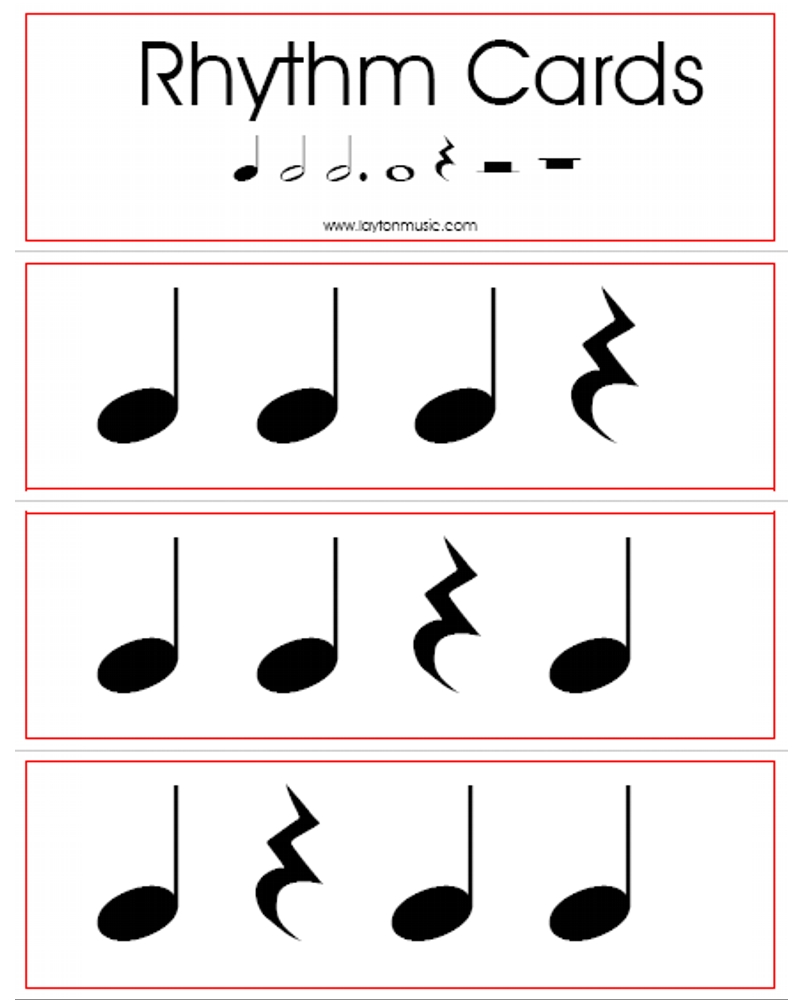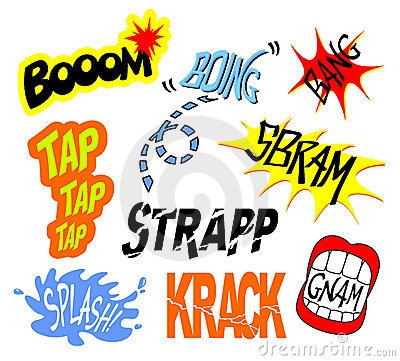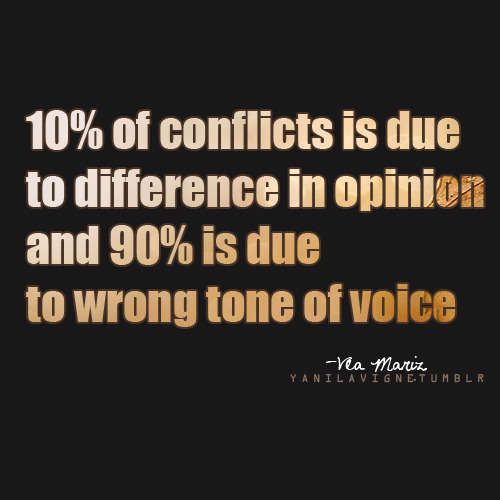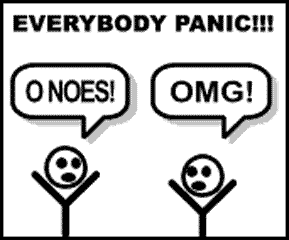Definition: The measured rhythm of a poem.
Example: In a haiku, the first line must always have five syllables, the second line must have seven syllables, and the last line must have five syllables.
Significance: Meter is important because it sometimes determines the type of poem and how the poem is to be said.
Wednesday, May 30, 2012
Rhyme
Definition: The similarity of different words with the same ending sound.
Example: Cat, at, hat, mat, sat, rat
Significance: Rhyme is important because it puts emphasis on a repeating sound and is also entertaining to hear, instead of listening to a poem that is more like a paragraph without rhyme.
Example: Cat, at, hat, mat, sat, rat
Significance: Rhyme is important because it puts emphasis on a repeating sound and is also entertaining to hear, instead of listening to a poem that is more like a paragraph without rhyme.
Rhythm
Definition: A pattern of regular or irregular beats.
Example: The reader of a poem must follow a certain rhythm or beat just like a rapper raps to the rhythm or beat of a song.
Significance: Rhythm is important because it changes the way each line is read in a poem and how the words are said, depending on what part of the rhythm it is said.
Example: The reader of a poem must follow a certain rhythm or beat just like a rapper raps to the rhythm or beat of a song.
Significance: Rhythm is important because it changes the way each line is read in a poem and how the words are said, depending on what part of the rhythm it is said.
Thursday, May 24, 2012
Alliteration
Definition: A form of writing in which the beginning of almost every word begins with the same letter.
Example: Purple pigs pointed playfully at pineapple pizzas.
Significance: Alliteration is important because it puts emphasis on that letter or sound and makes the poem more entertaining to read.
Example: Purple pigs pointed playfully at pineapple pizzas.
Significance: Alliteration is important because it puts emphasis on that letter or sound and makes the poem more entertaining to read.
Onomatopoeia
Definition: An onomatopoeia is a sound that is a word or written out.
Example: Boom, bang, crash, bam, smack, splash
Significance: It helps gives the reader a better idea of what sound is made in a part of the poem, such as if a bookcase fell over or if a dog barked.
Example: Boom, bang, crash, bam, smack, splash
Significance: It helps gives the reader a better idea of what sound is made in a part of the poem, such as if a bookcase fell over or if a dog barked.
Personification
Definition: Personification gives human qualities to a nonhuman thing or being.
Example: The ocean waved at me.
Significance: Personification is important because it helps describe the qualities of a nonhuman thing, and compare it to what it would be with human traits.
Example: The ocean waved at me.
Significance: Personification is important because it helps describe the qualities of a nonhuman thing, and compare it to what it would be with human traits.
Imagery
Definition: Figurative language that gives images for each type of sense. The seven types of imagery are tactile, visual, auditory, olfactory, gustatory, kinesthetic and organic imagery.
Example: Tactile: I could feel the smooth picnic blanket spread beneath me. Visual: It was a checkered red and white. Auditory: I heard the birds chirping and leaves bristling. Olfactory: I smelled all of the food my mother cooked, mixed with the smell of pine from the trees. Gustatory: I could almost taste the juicy sandwiches of beef and turkey in my mouth. Kinesthetic: I tripped on a rock, stumbled for a few steps, and then fell on the ground. Organic: My heart felt so light and free being outside in the open.
Significance: Imagery is important because it gives the reader a better mental picture about the setting of the poem.
Example: Tactile: I could feel the smooth picnic blanket spread beneath me. Visual: It was a checkered red and white. Auditory: I heard the birds chirping and leaves bristling. Olfactory: I smelled all of the food my mother cooked, mixed with the smell of pine from the trees. Gustatory: I could almost taste the juicy sandwiches of beef and turkey in my mouth. Kinesthetic: I tripped on a rock, stumbled for a few steps, and then fell on the ground. Organic: My heart felt so light and free being outside in the open.
Significance: Imagery is important because it gives the reader a better mental picture about the setting of the poem.
Friday, May 18, 2012
Simile
Definition: Comparing two objects using like or as.
Example: Her teeth were as white as snow.
Significance: Similes are important because it gives the reader a better image of an object or background by comparing it to another unrelated subject.
Example: Her teeth were as white as snow.
Significance: Similes are important because it gives the reader a better image of an object or background by comparing it to another unrelated subject.
Repetition
Definition: Something repeated.
Example: "If you can dream/If you can think/If you can meet..."
Significance: Repetition is important because it will often show and important pattern in a poem that is key to understanding what the writer was trying to say when he/she wrote it.
Example: "If you can dream/If you can think/If you can meet..."
Significance: Repetition is important because it will often show and important pattern in a poem that is key to understanding what the writer was trying to say when he/she wrote it.
Tone
Definition: The way a reader reads a poem or his/her attitude towards the poem.
Example: "And yet don't look too good, nor talk too wise..." I would read this line as kind and informative, while another may read this line as scolding and lecturing.
Significance: The tone of the poem determines the mood and how the reader interprets it.
Example: "And yet don't look too good, nor talk too wise..." I would read this line as kind and informative, while another may read this line as scolding and lecturing.
Significance: The tone of the poem determines the mood and how the reader interprets it.
Interpretation
Definition: The idea a reader comes up with from reading the poem.
Example: "If you can keep you head when all about you
Are losing theirs and blaming it on you..." This quote from the poem "If" can be interpreted as staying calm while everyone else panics and thinks it is your fault.
Significance: Interpretation is an important part of poetry because every person has a different interpretation of what the poem means, and it listening to everyone's unique interpretation opens new ideas to to each individual reader.
Example: "If you can keep you head when all about you
Are losing theirs and blaming it on you..." This quote from the poem "If" can be interpreted as staying calm while everyone else panics and thinks it is your fault.
Significance: Interpretation is an important part of poetry because every person has a different interpretation of what the poem means, and it listening to everyone's unique interpretation opens new ideas to to each individual reader.
Wednesday, May 16, 2012
Metaphor and Extended Metaphor
Metaphor
Definition: An unliteral form of speech that show similarities or resemblances.
Example: Finding a needle in a haystack.
Significance: Metaphors are important because they show two completely unrelated objects can reflect qualities of the other, or be compared to another pair.

Extended Metaphor:
Definition: A metaphor that is longer than a single line, but goes on and compares several objects.
Example:
Life is a journey.
Significance: Like a metaphor, an extended metaphor takes two unrelated objects or situation and compares them, but it also has other meanings within the metaphor that make it up.

Definition: An unliteral form of speech that show similarities or resemblances.
Example: Finding a needle in a haystack.
Significance: Metaphors are important because they show two completely unrelated objects can reflect qualities of the other, or be compared to another pair.

Extended Metaphor:
Definition: A metaphor that is longer than a single line, but goes on and compares several objects.
Example:
Life is a journey.
Significance: Like a metaphor, an extended metaphor takes two unrelated objects or situation and compares them, but it also has other meanings within the metaphor that make it up.

Monday, May 14, 2012
Speaker
Definition: The point of view from which the poem is being told.
Example: A person reciting a poem in front of the class.
Significance: The speaker is significant because the poem will always be read differently, since each reader is different. This means that one reader could read it with strong emotion and feeling, while another one could make it sound small and insignificant, giving the listeners different points of view of the poem.
Example: A person reciting a poem in front of the class.
Significance: The speaker is significant because the poem will always be read differently, since each reader is different. This means that one reader could read it with strong emotion and feeling, while another one could make it sound small and insignificant, giving the listeners different points of view of the poem.
Thursday, May 10, 2012
Symbol
Definition: A word or phrase used as representation of a greater but hidden theme
Example: A description of clear blue skies and a calm ocean at the beach can be a symbol for a perfect day.
Significance: Symbols are important because they can hold hidden meanings for the reader to find out in order to understand the true meaning of the poem.
Couplet
Definition: Two lines in a poem grouped together, sometimes by length or rhyme.
Silly Sally
When Silly Sally irons her clothes, they come out looking awful.
She did not read the label and her iron was meant to waffle.
by Denise Rodgers
When Silly Sally irons her clothes, they come out looking awful.
She did not read the label and her iron was meant to waffle.
by Denise Rodgers
Significance: It helps group together the same thoughts or finish one and helps the reader know where to read the poem so they don't read the poem incorrectly by reading it together as an entire paragraph or without the pauses.
Stanza
Example:
Where the Sidewalk Ends
"There is a place where the sidewalk ends
and before the street begins,
and there the grass grows soft and white,
and there the sun burns crimson bright,
and there the moon-bird rests from his flight
to cool in the peppermint wind.
Let us leave this place where the smoke blows black
and the dark street winds and bends.
Past the pits where the asphalt flowers grow
we shall walk with a walk that is measured and slow
and watch where the chalk-white arrows go
to the place where the sidewalk ends.
Yes we'll walk with a walk that is measured and slow,
and we'll go where the chalk-white arrows go,
for the children, they mark, and the children, they know,
the place where the sidewalk ends." -Shel Silverstein
Significance: It helps the reader understand which ideas of the poem are similar and where a new idea starts. It also gives breaks between these ideas so it doesn't become and entire story or paragraph, but different parts to a poem.
Subscribe to:
Posts (Atom)













